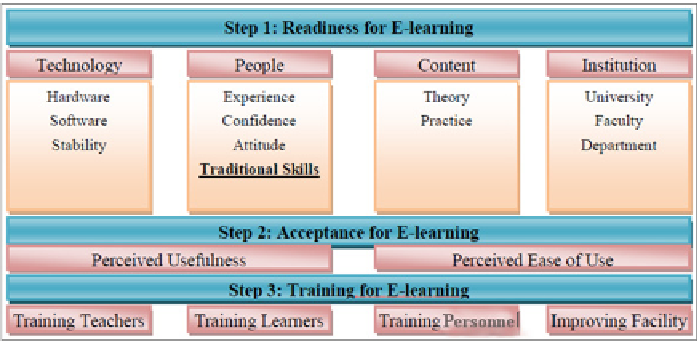Information Technology Reference
In-Depth Information
Fig. 1.
Akaslan and Law's [11] model for measuring students' readiness for e-learning
Recent studies conducted on students mostly revealed positive results, which mean
they generally see themselves almost ready for e-learning [11], [12], [17].
3
Research Methodology
Our previous study [3] revealed that the DIM of Hacettepe University Faculty of
Letters is the only department which was almost ready in terms of its academic staff
among 16 departments at the Faculty. Starting from this point, we wondered about the
situation for DIM students. The aim of this study is to assess the readiness of 311
students who were enrolled in the undergraduate program of DIM at the time this
research was conducted. Our paper addresses the following research questions:
•
Are the students of DIM ready for e-learning?
•
What are the students' perceptions about the main components (availability
of technology, use of technology, self confidence, acceptance and training)
of e-learning?
•
Are there any differences among the students regarding their genders, grade-
level and use of smart phones in terms of accepting/rejecting e-learning?
To be able to determine the readiness level, a paper-pen questionnaire was
employed to the 311 DIM students. Participants were asked to report their perceptions
on readiness for e-learning. The questionnaire had been developed and tested by
Akaslan & Law [11] and based on a conceptual model of the readiness for e-learning
which assesses the perceived readiness in three phases namely, readiness, acceptance
and training (Fig. 1). Original questionnaire had 78 items which are measured with a
binary choice or a five-point Likert scale, along with some free text boxes for the
participants to explain their scores or choices [11]. Nevertheless, we adopted only the
items that can be answered with the Likert scale, in order to understand the basic

Search WWH ::

Custom Search